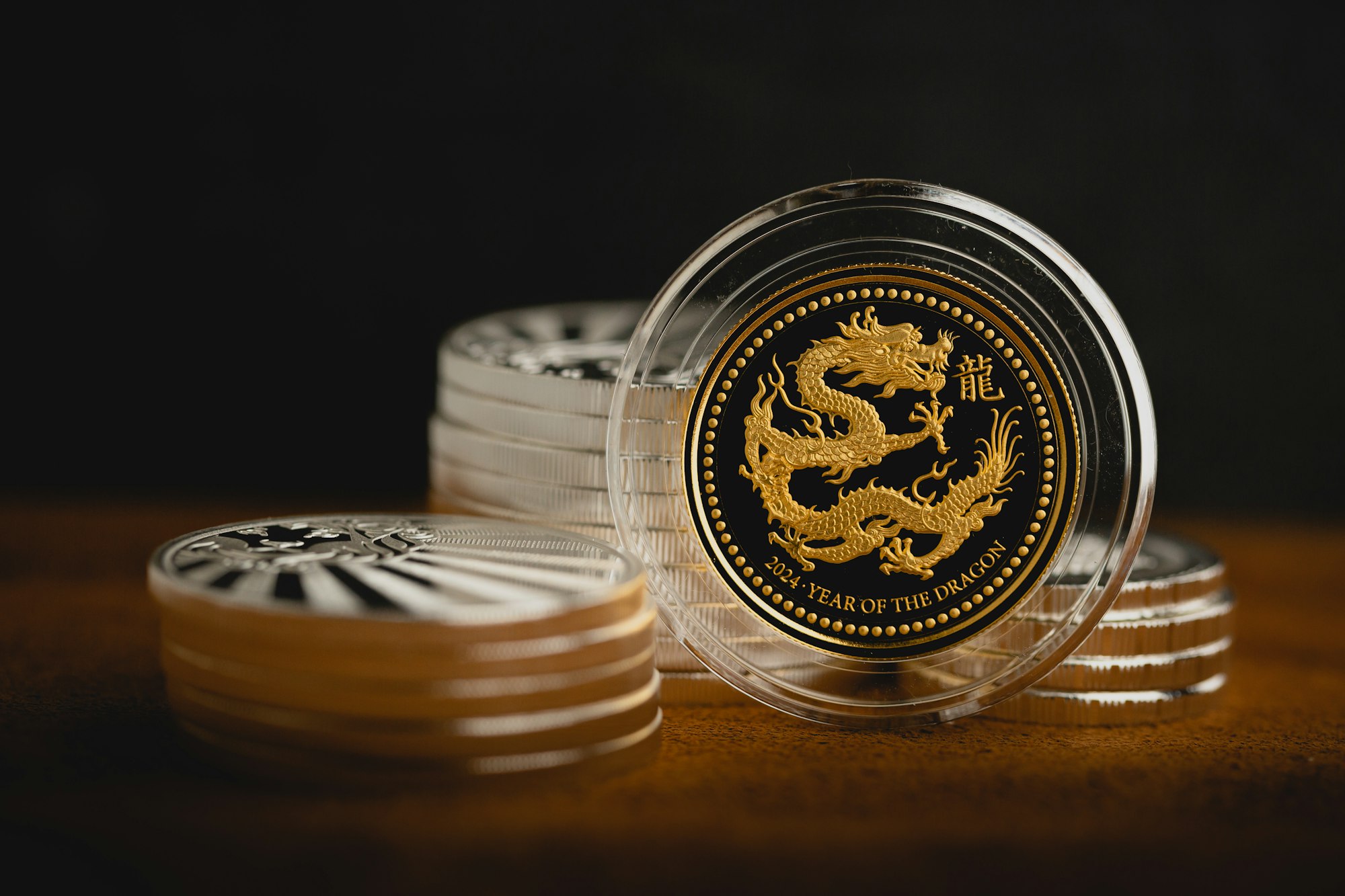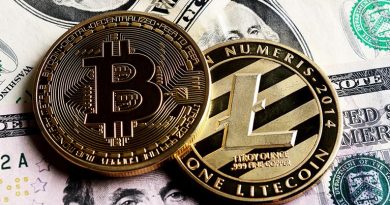What’s the Chinese narrative?
早安! (GM in Chinese according to Google translate)
Crypto Twitter is going crazy for the “Chinese narrative.” What’s going on?
In moments like this, I’m thinking…why did I break up with my Chinese ex-gf? 😫 She could’ve been my edge.
Here’s what we got today:
- China Coins. The latest crypto narrative explained.
- OpenSea vs. Blur. What we can learn about competition between crypto protocols.
- Around the Web. Central Banks are testing out their CBDCs. Polygon is firing 20% of its staff and more.
Let’s dive in!
Reading time: 10 minutes
Follow us on Instagram!
📉 THE MARKETS
|
|
Sources: Coingecko, DeFiLlama, Fear & Greed Index
“China is a sleeping giant. Let her sleep for when she wakes up she will move the world.” – Napoleon
“China Coins” Narrative Explained
|
|
Is Quantitive Easing Coming?
The People’s Bank of China injected around $121 billion USD into the market. They did it through reverse repurchase contracts on February 17th.
🇨🇳 The People’s Bank of #China offered 835 billion yuan ($121 billion) of cash via seven-day reverse repurchase contracts on Friday, resulting in an injection of 632 billion yuan on a net basis. That’s the largest one-day addition on record in data going back to 2004 – Bloomberg pic.twitter.com/TeepvMBz82
— Christophe Barraud🛢🐳 (@C_Barraud) February 17, 2023
This was done as part of China’s efforts to grow its economy, which was significantly derailed due to COVID-19. And, so, China has abandoned its “zero-covid” policy.
This injection is a significant sum of money. In fact, it is the largest single-day liquidity injection ever.
Think about the trickle down effect. Part of the cash injection will almost inevitably end up in crypto.
(Kinda like how Americans received Stimulus money in 2020, and that drove Crypto prices up)
The Hong Kong Hug
Hong Kong is a part of China, but it plays by its own rules since it’s a special region.
The special administrative region has proposed rules for crypto trading platforms. Retail trading of crypto could be legalized. At least some legal acceptance of crypto is eventually bound to happen.
They also have subtle support from the Chinese government.
Even though Hong Kong is small, it’s 4th largest financial center in the world. Any adoption or legalization will give a big boost to the crypto economy.
Some speculate that Hong Kong is an indirect way for the Chinese government to earn a seat at the crypto table, as long as directly legalizing crypto in mainland China does not fit the government’s risk appetite.
The 2nd Order Consequences
So what kind of coins could benefit from all this?
Below is a watchlist created by Owen.
new watchlist
may be useful later pic.twitter.com/uyJ2FD8Poj
— owen (@owen1v9) February 16, 2023
Here’s another one by Andrew Kang (Mechanism Capital).
China Coin Narrative is here. Some of my favorites
– $FIL (恭喜FIL財)
– $DOT
– $VET
– $EOS
– $ICP
– $KLAY (actually Korean, but it might get confused)
– $BNB (People always mistake CZ for Chinese Citizen)
– $ETH (Vitalik has had multiple Chinese GFs)— Andrew Kang (@Rewkang) February 17, 2023
Remember, a coin doesn’t have to originate from China to be a part of the narrative. Think of it as any token that the Chinese investors may have an affinity towards.
The Overall Logic is
- China may keep injecting cash to stimulate the economy, and there are regulation tailwinds.
- More money means people could be more risk on and into crypto.
- Each region of the world has its own preferences for tokens. So people are speculating based on what projects Chinese crypto investors might prefer.
Remember, so much of narratives are based on stories, not just facts.
Fed tightening was part of the reason that macro went south. This is now being balanced out through quantitative easing from China and Japan.
My working thesis atm is that the next bull run is going to start in the East. It will be a humbling reminder that crypto is a global asset class and that the West, really the US, always only ever had two options: embrace it or be left behind. It can’t be stopped. That we know.
— Cameron Winklevoss (@cameron) February 19, 2023
Cameron is saying the next bull run will come from the east. Perhaps we should all start paying more attention to those markets as well.
What is Edgy Doing? I’m not too interested in this narrative. It feels like there’s a new narrative popping up every other day – you don’t have to catch them all. I don’t invest in coins just because of hype.
Some of the stuff being shilled is trash from 2018.
There are a lot of other interesting narratives going on which are more fundamental based.
Fundamentals + Hype = 🚀
How did Blur take the crown?
|
|
OpenSea was once the undisputed king of NFT marketplaces. They were a household name by Crypto standards. A new challenger has entered, and they might take the crown.
Blur is a new NFT marketplace and aggregator launched in October 2022. And it has been a hit from day one – having already overtaken OpenSea in trading volume.
- 7-day volume: OS = USD 119.83 million vs. Blur = USD 632.76 million
- 30-day volume: OS = USD 436.81 million vs. Blur = USD 930.39 million
How did Blur do this? Let’s investigate.
Note: You’ll become a better investor if you learn to analyze protocols from a business lens. This article’s a case study to see how an underdog can compete with a giant such as OpenSea.
The Product
It has several features that make it especially attractive for pro traders:
- Tools to help sweep the floor.
- It claims to be 10x faster than other aggregators.
- Near-instant metadata updates on collection art reveal.
- Gas-optimized smart contracts and gas priority presets to outcompete buyers from other platforms.
- Presents exhaustive data points, including floor pricing for specific traits, which isn’t an option in any other marketplace.
(For newbies, “sweeping the floor” just means buying multiple items from the same collection.)
Blur created the very best product for pro traders out there. And so, pro-traders started using them over existing marketplaces.
Focus on Pro Traders
Blur clearly targets a particular niche: Pro traders.
Before Blur became accessible to the public, it was in private beta for a few months and adapted to the needs of pro traders during that period.
This can be seen as a form of counter positioning. OpenSea tries to target anyone who wants to trade NFTs. But this limits their options. If they were to try to add some of Blur’s data and features, it would massively affect the user experience of a large majority of its customer base.
The numbers tell the same story:
- Blur had 80,105 traders compared with OpenSea’s 326,412.
- In the past 30 days, the average price traded on Blur was USD 1.48 k, while on OpenSea, it was USD 318.04.
This shows us that whale traders are flipping NFTs more frequently on Blur. OpenSea, in contrast, is where the amateurs and newbies trade.
|
|
SHOW THEM THE MONEY!
Blur announced its token at the beginning. They were also very clear about what users could do to receive their $BLUR airdrop. All active traders on Blur were promised $BLUR.
Now, they have already completed two rounds of airdrops. And more rounds seem to be on the way.
Even now, OpenSea still doesn’t have its own token. It appears that they were always aiming for a Wall Street IPO rather than their own crypto token.
They may now be forced to rethink that strategy by the new kid on the block.
Creator royalty and Marketplace fees
A percentage of the sales price is always given to the creator of the NFT whenever a sale occurs. This is known as the “creator royalty.”
Since royalties can greatly affect traders’ margins, Blur did not enforce full royalties. Instead, they simply tried to incentivize royalties.
When traders list NFTs, they can customize their royalties. If they set high royalties, they’d receive a bigger airdrop. They’d receive a much smaller airdrop if they set very low royalties.
(Blur does enforce a minimum 0.5% royalty instead of the more traditional 5%-10%.)
Blur also does not collect a marketplace fee for facilitating any trades.
Race to the bottom
Once Blur removed a marketplace fee and creator royalties, OpenSea couldn’t stand by idly.
It’s easy to market economics: If traders can get better prices at Blur, they will move there. Quickly, OpenSea hinted at eliminating creator royalties. However, that plan was eventually scrapped due to community pressure.
So, they introduced the “blocklist.” This allowed creators of new collections to add an “operational filter,” essentially picking from a list of marketplaces that didn’t enforce creator royalty. Creators could block their collections from being traded on any marketplaces selected from the filter.
Blur was, of course, included in that “blocklist.” And last week, Blur retaliated. They encouraged creators to block listings on OpenSea. Creators were promised the enforcement of full creator royalties.
In response, OpenSea removed their marketplace fee (temporarily) and the full enforcement of creator royalties.
Well, they kinda removed it…
When @opensea said they’ll drop the OpenSea fee to 0% for a limited time, they really mean it…
And now, the limited time must have been over since they already bumped up the Service Fee to 0.5% ☠️
LMAO you can’t make this shit up pic.twitter.com/jyEHGoB6HH
— JBond (@jbondwagon) February 22, 2023
Key Lessons
The “Blur vs. OpenSea” fight is a great example of an upstart overtaking an incumbent.
However, this might bring externalities into play. And in this case, both creators and marketplaces suffered.
It is really difficult to create moats in crypto. During the NFT mania, OpenSea enjoyed gigantic market dominance. But they are being challenged. We discussed this in a previous issue.
Differentiation is key in the fight against incumbents. The focus on pro traders was a critical aspect of Blur’s winning strategy. Similarly, Curve’s focus on pegged assets was crucial in overtaking Uniswap’s TVL.
However, it is still too early to tell if Blur can maintain its lead. The bear market is for pro traders only. Once the bull market returns, OpenSea might attract more amateurs and win again long-term.
On another note, Blur’s co-founder doxxed himself. His background’s impressive.
A TLDR about me. Before working on Blur, I:
– Dropped out of high school to go through Y Combinator at 17
– Studied Math with Computer Science at MIT
– Received the Thiel Fellowship to leave MIT and start Namebase
– Sold Namebase to Namecheap
— Pacman | Blur.io (@PacmanBlur) February 22, 2023
It makes me wonder what other anon founders backgrounds are in the space.
📊 Camelot: The ArbiDEX
|
|
This chart shows the price of $GRAIL, the token of CamelotDEX, the Arbitrum-native DEX.
On January 16th, the price sat at just USD 216. It then hit an all-time high on February 16th of USD 3,423.35. That’s nearly 16x in one month! What’s up with this project?
CamelotDEX was launched at the end of November 2022. According to them, it is designed to support Arbitrum by building flexible and sustainable liquidity.
What makes them different? Three major core features are worth knowing. Their unique AMM model, NFT implementations of liquidity positions, and the custom GRAIL/xGRAIL tokenomics model. These features provide many levers that were not previously available for projects. You can read more about them here.
The numbers also agree:
- Their TVL is around USD 70 million. The Curve TVL on Arbitrum is around USD 78 million.
- Their trading volume in February was approximately USD 360 million. In contrast, the Curve volume on Arbitrum was around USD 247 million.
Despite not having any brand value or recognition like Uniswap or Curve, their tremendous growth happened within just three months from the opening of the protocol.
I don’t have a position in Grail – I always disclose if I ever have a position in a project that I write about.
🌎 What’s Happening?
📰 Industry News
Central banks are pilot testing their CBDCs. Russia and Japan are launching their respective pilots in April.
Celestia introduced Rollkit. It is a modular framework for rollups. It will help developers to deploy throughout the modular stack.
Nexus Mutual pays out around $5 million to FTX and BlockFi users who had bought coverage under the protocol. DeFi is protecting the victims better than the SEC.
GQ Magazine is launching its first NFT collection. The holders of this collection will have access to a magazine subscription, merchandise, and live events.
Polygon Labs announced that they’d reduced their team by 20%. They said it is part of the strategy to unify all teams under Polygon Labs to drive more growth.
🍿 DeFi Bites
Cosmos Hub underwent Rho network upgrade. It will lay the groundwork for the upcoming Interchain Security System.
zkSync launched its mainnet alpha on Ethereum. Registered projects can deploy and test their dApps. It is also fully open-source.
LayerZero launched the Testnet Bridge. It will help developers buy Goerli testnet Ether using real Ether. Earlier, they had to use various faucets for that.
OlympusDAO decided to deposit $33,000,000 into the FraxBP. This follows the Ohmies decision to put idle treasury assets to work to earn risk-adjusted returns.
Radius introduced 360°dex. It is the first MEV-resistant sequencing DEX. It’ll protect users against front-running and sandwich attacks.
SudoSwap has made $SUDO transferrable. When the token was airdropped, it wasn’t transferable. Now people can trade $SUDO.
Gitcoin launched the Gitcoin Passport Scorer API. Now developers can integrate Gitcoin Passport into their applications with a few lines of code.
🧠 Twitter Alpha
2 weeks ago, Ark Invest released an EPIC 143 page report on some of the biggest ideas for 2023. Everything from AI to crypto, space exploration to 3D printing and robotics. Today, I am going to break that down for you. Enjoy!https://t.co/voTQeQYov4
— Coin Bureau (@coinbureau) February 19, 2023
1/ the next meaningful wave of crypto innovation will come from a technology that few are paying attention to
you’ve likely heard of DeFi’s “money legos” — but a much more powerful dynamic is on the horizon
enter “compute legos”https://t.co/dYGy4qKX5f
— David Attermann (@attertweet) February 17, 2023
– The network effects of centralization
– The role of NFTs in decentralization
– Consumer adoption of NFTsHere is @punk6529‘s 1 hour and 35 minutes interview with @BanklessHQ. Readable in <15mins. pic.twitter.com/0ezd9EDDzj
— An Ape’s Prologue (@apes_prologue) February 17, 2023
Looks like @coinbase is growing its DeFi Mullet…
with @Rocket_Pool!
A few months ago, @cbventures became a Rocket Pool oDAO member. Today, they just announced an investment into $RPL
Is Coinbase going to use the Rocket Pool protocol as its staking service provider🤔$RPL… https://t.co/aWnT4m9XHu pic.twitter.com/dSgN64vWR6
— DavidHoffman.bedrock 🏴🦇🔊🔴_🔴 (@TrustlessState) February 17, 2023
Peek behind the curtains & follow the money. 👀
Introducing Transfer Flows on Blockpour!
This feature lets you track ERC-20 token transfers to & from entities such as on-chain CEX wallets, providing comprehensive visualizations of the how, when, & where of the #data. pic.twitter.com/LQTWnljjGr
— Blockpour (@Blockpour) February 20, 2023
Looking for @LensProtocol WL and potential $LENS airdrop strategies🌿?
Let me present the top 7 protocols built on Lens across various sectors like socialisation, tooling, and decentralized identities.
A thread 🧵 pic.twitter.com/N1os8OZ4Rq
— vanillacream.eth ⛩ 🫘 (@0xvanillacream) February 20, 2023
I have a theory:
Regulators let the bad guys get big and blow up because it serves their agenda.1. destroy capital/resources in crypto ecosystem
2. burn people, deter adoption
3. give air cover to attack good actorsThe bad guys are actually on-side. Good guys are the enemy. https://t.co/DZI2O8gVyO
— Jesse Powell (@jespow) February 19, 2023
😂 Meme






